Some of our links are affiliated, we will earn a commission when you buy a service or product. This will have no extra cost for you. For further info please refer to our Privacy Policy

Last Update Dec/2021: Italy is open for tourists. Although the borders are open, there are safety protocols to follow before traveling, and not everyone is permitted to travel to Itay for tourism. All the information about traveling to Italy now is on their official website.
Walking along a train station in Italy never felt so good and so weird at the same time. There are signs everywhere reminding you to keep a safe distance from other passengers. Stickers on the seats mark them as unavailable, giving you more space to stretch legs, which it’s nice but not easy to relax. And above it all, it’s hard to get used to wearing the face mask.
The journey from Turin to Venice takes about 5 hours, and all passengers must wear face masks the whole time. The train company also suggests wearing disposable gloves as well. The marks on the floor and the hand sanitizers on every door are other reminders of the new normal.
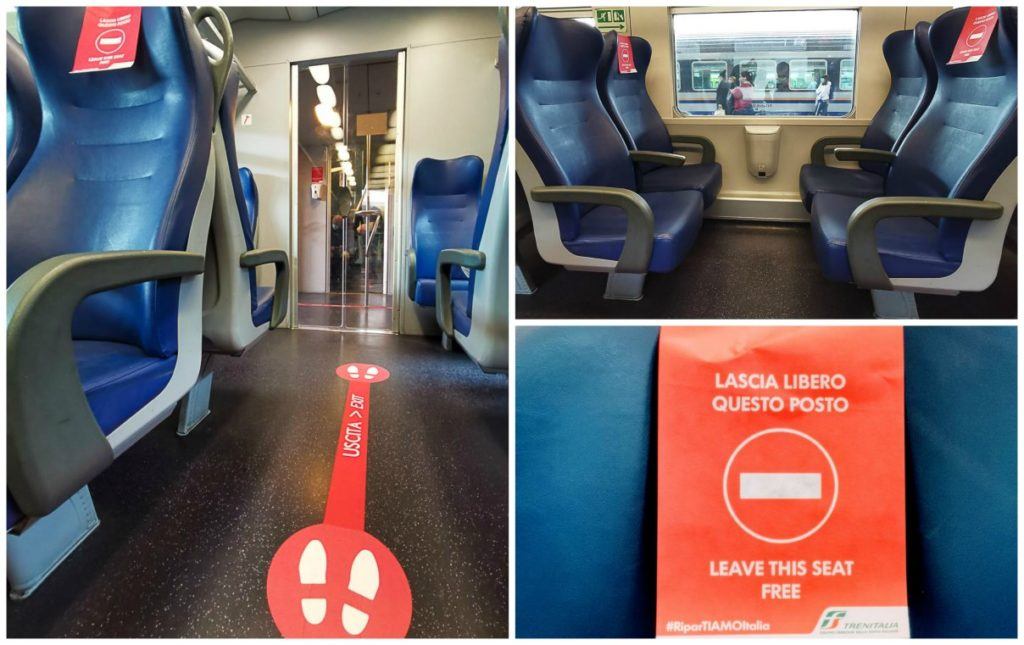
Italy is open for international travelers since June 3rd, and many of its cities are eager to receive tourists as soon as possible. They need an economic boost, but more than that, people here need to feel that the Post-Covid-19 era is real, and that it shall bring better days.
The early reopening of Italy was a surprise for many, as the country was one of the first ones to be hit by the health crisis, and the number of infections and deaths were one of the highest in the world. After three months of lockdown, concerts on the balconies, and an economic emergency, Italy is betting on tourism and it’s ready for summer.
But how is it to go traveling in Italy now? What can travelers expect from airports, hotels, museums, beaches and restaurants? How did Covid-19 change the way of visiting Italy? And most important, is it safe to travel to Italy now?
Before answering all these questions, there are two things to keep in mind. First, we are not health specialists, and before even thinking of traveling to Italy, you must check the health guidelines of your own country. Second, we live in Turin in Northern Italy, we explored the city as tourists, then traveled to Venice – our first trip after lockdown. The information presented here is a result of our perception as travelers and a series of talks and interviews we did with people from the hospitality industry.
If you are from a European Union country and want to visit Italy this summer, we have good news. You can pack your bags and travel to Italy now, but bear in mind that your safety depends not only on the measures the government and hospitality industry put into place but also on your behavior and care.
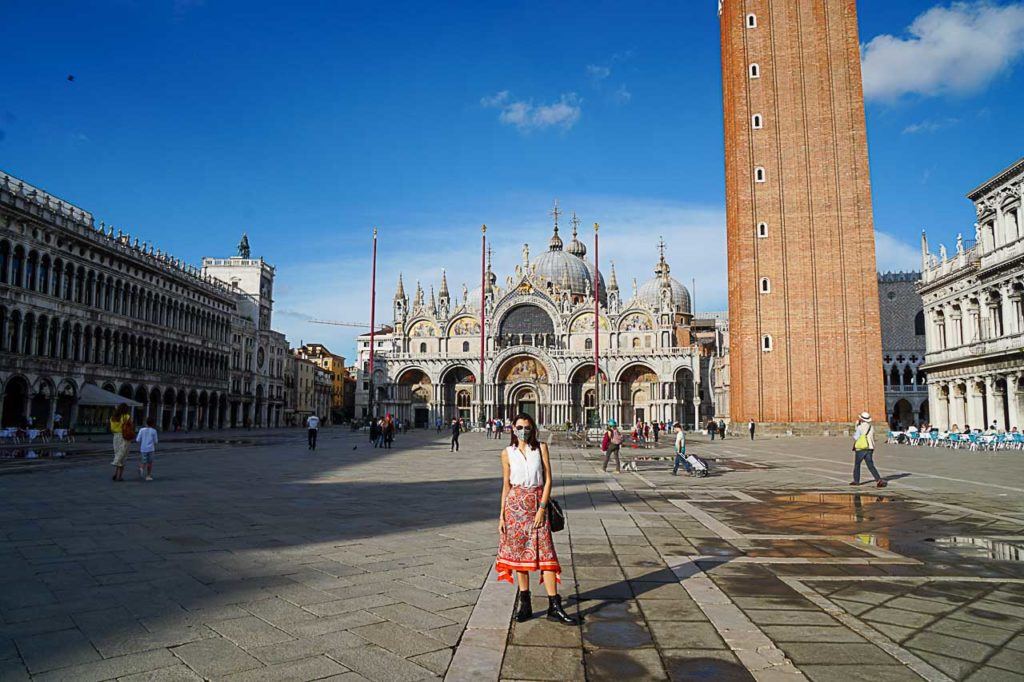
How is it to travel to Italy now?
It sounds weird to say, but it was good to travel in Italy now. Cities like Rome, Venice, Florence, and Milan are still empty from the crowds of tourists that used to take over the city. Prices are cheaper for hotels, activities, and even transportation.
Almost everything is open, some small businesses or family-run guesthouses are still waiting for more tourists to open their doors. Unfortunately, some businesses didn’t make it through the crisis. It’s sad to see so many shops closed in Venice, but it is also an opportunity to rethink tourism and find better ways to travel and live with the Covid-19 virus.
So, who can travel to Italy? As of June 3rd, Italy is open to visitors arriving from the 26 countries members of the European Union, plus Switzerland, Norway, Iceland, UK, Liechtenstein, Andorra, San Marino, Vatican City and Monaco.
Please note that the travel restrictions are based on where you are traveling from, regardless of your nationality or passport. Regulations change fast, so only venture yourself out of your home if you know the rules in your country and in Italy.
When I was writing this article, a 14-day quarantine is mandatory for travelers arriving from – or have visited – any other country not listed above. For example, if a person flew from the US to France and then to Italy, she/he is subject to the 14-day quarantine at her/his own expenses.
Update: As of July 1st travelers coming from Algeria, Australia, Canada, Georgia, Japan, Montenegro, Morocco, New Zealand, Rwanda, Serbia, South Korea, Thailand, Tunisia and Uruguay are allowed to travel to the European Union. Although each EU member can decide to accept travelers from these countries or not, Italy decided to not accept it.
Wearing face masks is mandatory at airports, train stations and ports. All passengers are subjected to temperature control and if your body temperature is over 37,5º C you will be checked by Health Authority.

What can you expect from hotels, museums, beaches and restaurants?
You made it to Italy; now it’s time to face the cleaning and safety measures that will change your hotel experience. There are two significant concerns here, the safety of guests and the safety of the staff working in hotels and hostels.
All hospitality businesses must follow the Italian Ministry of Health guidelines of hygiene and procedures to avoid personal contact. However, some hotels are going beyond and creating their own cleaning protocols to make sure guests and their team can have the best possible experience.
Some of the most significant changes in hotels and hostels are the new cleaning guidelines for rooms and especially for the shared spaces, online check-in and check-out, and the keep distance marks placed on the reception and common areas.
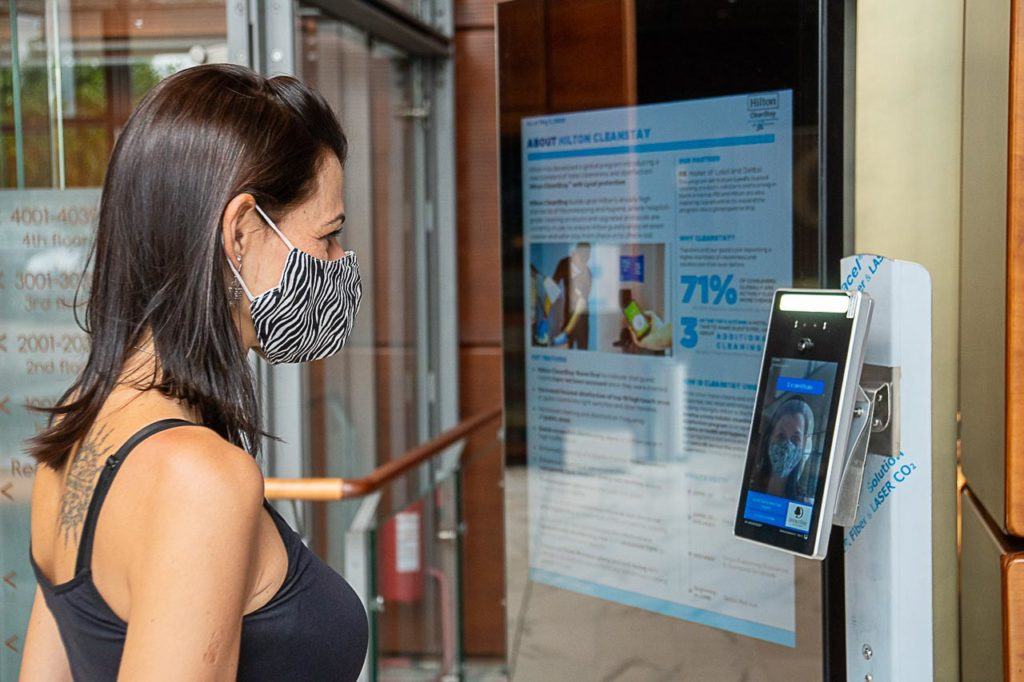
DoubleTree by Hilton Turin Lingotto is following the Hilton CleanStay protocol, which means that every person entering the hotel must wear face masks, sanitize their hands, and the hotel team will measure the guests’ temperature. The rooms and public spaces are receiving a more thorough cleaning. The number of guest sharing areas like gym, pool and restaurants is controlled, and the social distance must be respected. This contactless approach starts at the reception, and goes to the “knock and go” drop-off room service to “grab and go” breakfast.
Big hotel chains are more likely to have standardized procedures while small hotels and guesthouses might not have a straightforward approach. It doesn’t mean they are not following the guidelines from the health authorities. Still, the communication between traveler and staff might not be precise, which can lead to some safety measures not being properly followed, especially by the guest.
In Venice, we see many travelers not wearing face masks while in the hotel or at the reception, putting not only their health in danger but also the hotel staff’s. Changing the mindset is another crucial point to travel during post-Covid-19. You not only have to be aware of your behavior but also be flexible with your choices.
Hostels in Italy are another example of how travelers need to adapt to the new normality. People looking for the hostel dormitory experience will need to change their minds, the new normal “not sharing is caring”, which leaves guests with the option to book only private rooms.
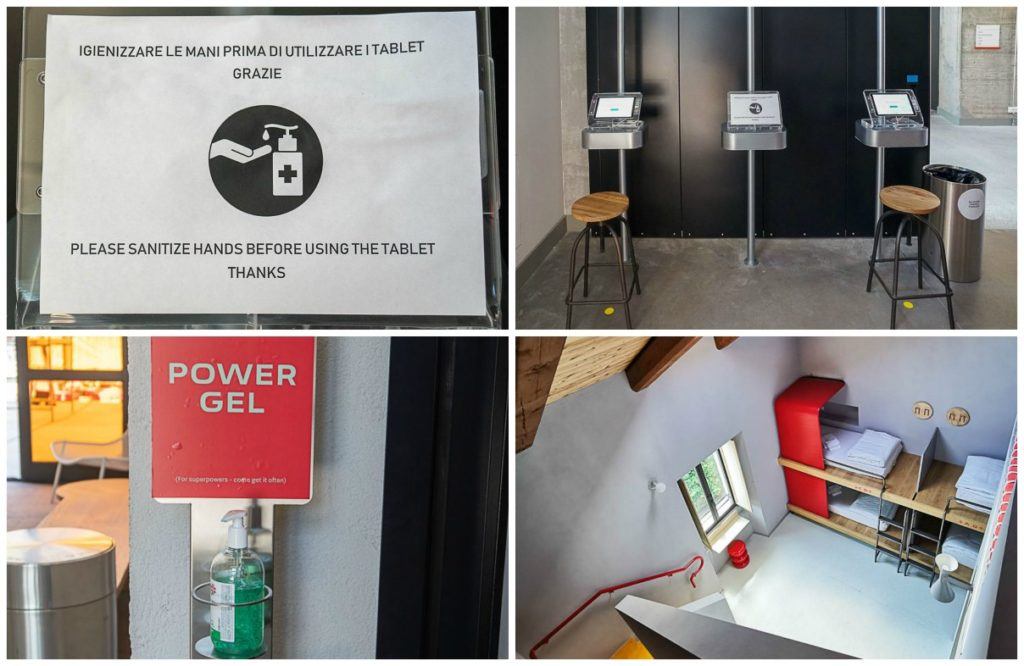
Combo Hostel in Turin opened its door at the beginning of the year and had to face the lockdown right after. Recently reopened, it still offers the hostel atmosphere following a strictly safe guideline, like no sharing rooms, extra cleaning of the public areas, and a particular sanitizing procedure on all the objects previously used by other guests. The staff has been trained to wear protective equipment, and the property offers hand sanitizer in every shared area hoping for the guest to follow the safety measures.
Hand hygiene and face masks are also a must for anyone who wants to visit museums in Italy. Keep in mind that most of the museums and tourist attractions are operating with reduced capacity and following health guidelines, so booking in advance is recommended.
In Turin, the famous Egyptian Museum is open with staff on every floor keeping an eye on the number of visitors. Signs tell you to clean your hands at the entrance of every exposition room. Stickers on the wall remind you to keep 1,5 meter distance from another person and wear your face mask at all times.
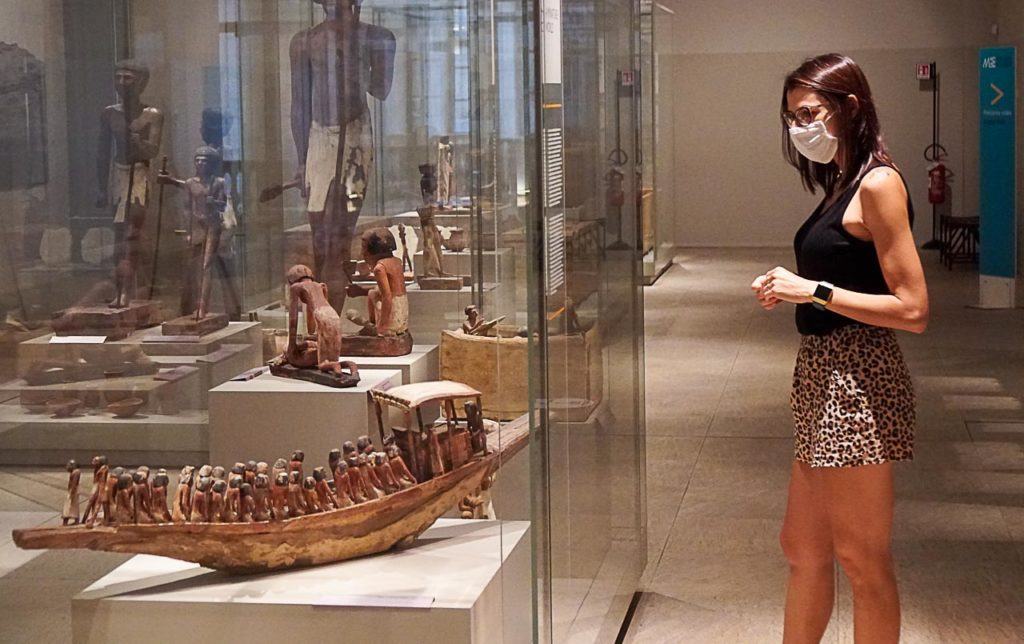
The incredible St. Mark’s Basilica in Venice is open as well, and the good news is that despite the face masks, you can visit it easier and faster. Attractions that used to be packed are waiting for tourists now, another positive aspect of traveling to Italy in the following months. The advice is to check the official websites for the new opening hours, the safety measures, and how to book your visit in advance.
Tours also had to adapt to the new normality. Big groups give space to smaller groups or private tours. Guides are trained to use masks, avoid crowds, and even adjust the itinerary to stop at places that are available to visit.
A food and history tour in Venice, like this one, is a fantastic way to explore the lesser-known spots and try delicious food. But most of the time, the snacks will be savored on the streets, avoiding gathering inside the small restaurants.
Traveling to Italy means trying delicious food and wine, and dealing with a few more post-Covid-19 safety measures. Bars and restaurants are open with extra tables outside, over the sidewalks, and in almost every square. More open-air seats, less contact with the restaurant staff, and in some cases, there are plexiglass between tables.
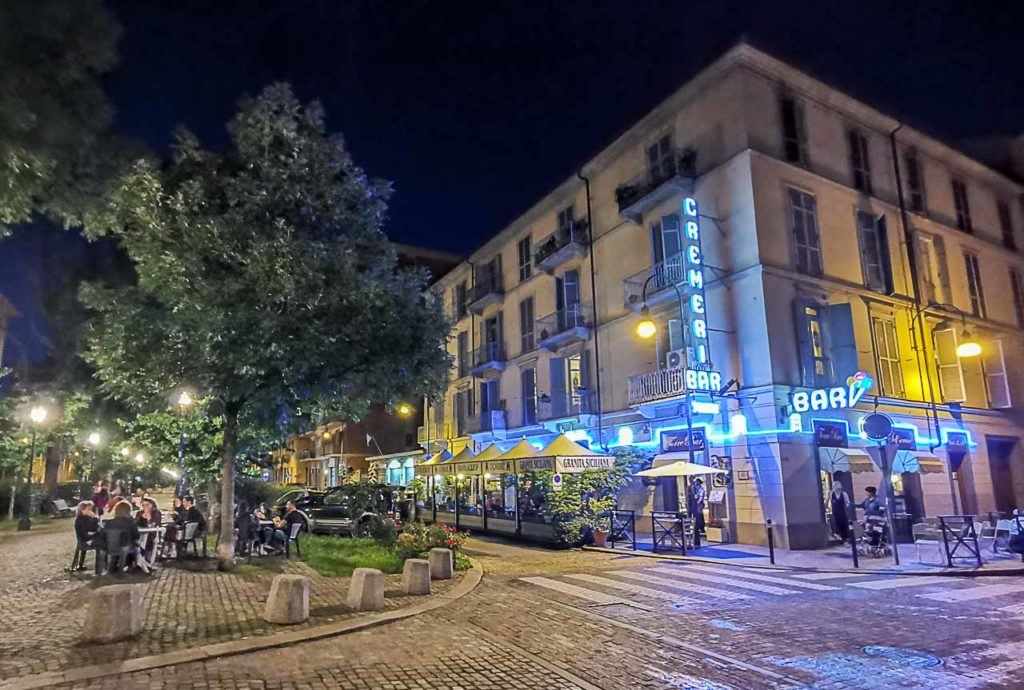
Restaurants had to go above and beyond to make sure people keep a safe distance while eating, as face masks are only mandatory when entering or leaving the place. There is a real concern with bars and the gathering of people during the aperitivo, the famous Italian happy hour. But again, it relies on personal care, and many of us forget to respect the safe distance, especially after a spritz or two.
Public spaces, squares, parks, and beaches are some of the big challenges. It is not because people are outdoors that it means they are immune. If the social distance is not possible, travelers should wear face masks, especially if they are surrounded by people who are not from the same household.
Healthy guidelines are being put in place to make the Italian beaches a safe destination. Sestri Levante, a famous beach in Genoa province is open for locals and visitors, but people need to follow a few rules to have a place under the sun.
Murilo Moro from Odisséia de Apolo lives in Sestri Levante, he explained that a 4 square meter space on the beach is available for up to 4 people from the same household. The distance between people on the sand and in the sea must be at least 1 meter. People are not allowed to leave personal belongings on the beach sand or reserve any space for family and friends.
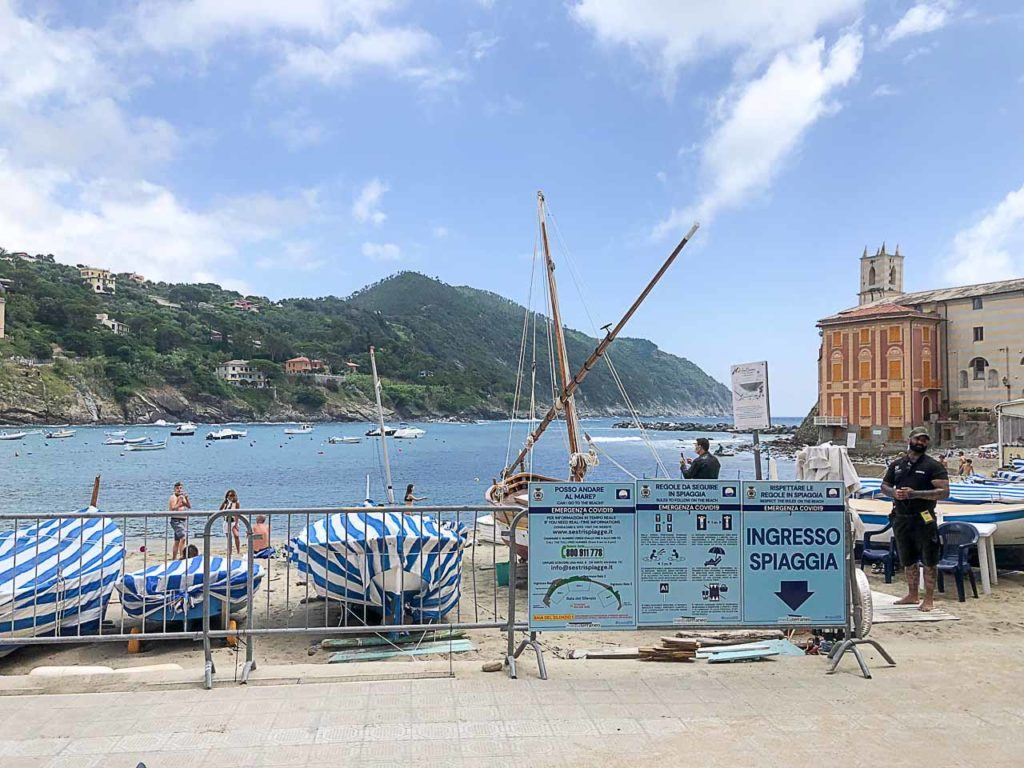
In Sestri Levante, beachgoers will find signs pointing to the beach’s official entrance. Private security at the entry point will help them find an empty spot on the sand or deny access if the area is full. Not only the beaches in Liguria region have a social distancing protocol, these measures are a reality in most Italian beaches, especially at the famous ones.
The truth is that life, traveling, and even sunbathing are far from normal now, so if we want to feel the joy of visiting a new place, we need to adapt.
How has Covid-19 changed the way to travel in Italy?
The hospitality sector and tourism departments in Europe are evaluating how Covid-19 will change the travel industry and set new patterns for traveling. Safety guidelines, rules, and cleaning measures are the tip of the iceberg called the new normality. The talks go from how major travel destinations can survive with fewer tourists at this reopening moment, to how travelers plan their holidays in the face of the pandemic.
In Italy, as in other countries in Europe, car and train trips are more likely to be booked than flights. Staycations, local tourism, off the beaten path destinations, and outdoor activities are the first travel trend in the post-Covid reality. Long haul traveling eventually will go back to “normal”, although experts can’t predict when.
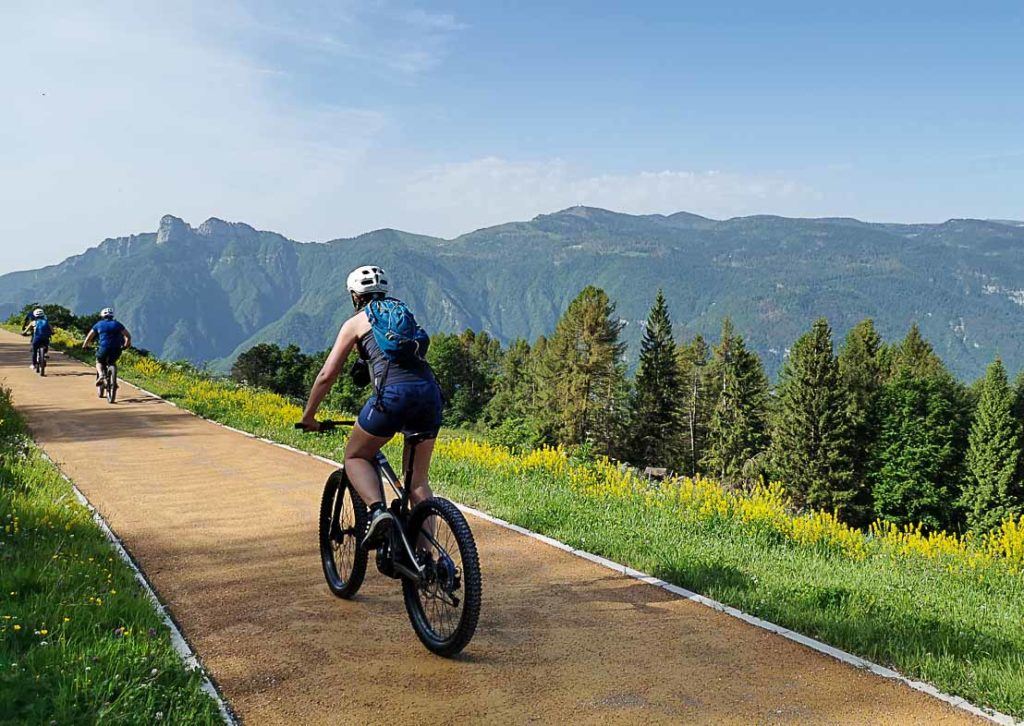
The good news is that Italy offers all types of experiences, from historical and famous destinations like Venice, Rome, Milan, and Florence, to lesser-known places and hidden gems such as Rovereto for art buffs, or Alpe Cimbra and Borno for nature lovers. All of them see tourism as a way to beat the crisis, and they are doing their part to make travel experiences as safe as possible.
The key to traveling to Italy this summer, or next winter, is to plan wisely. Travelers must be flexible, follow the guidelines of the Italian Health Department, and also from their home country.
The most important question: is it safe to travel to Italy now?
This is a tough question to answer. Compared to other countries in Europe, Italy was one of the first to deal with Covid-19 and also one of the first to work on a recovering plan. The country has been open for international travelers since June 3rd. Italy’s reopening for tourism came after the number of new cases and deaths were under control, and predictions show the contagion curve will decrease day after day.
Travelers can check the daily figures of Covid-19 in Italy and evaluate if the desire to travel and experience Italian culture, food & wine is worth the risk. Our trip through Northern Italy – Piedmont, Lombardy, and Veneto – the most affected region of the country was as good as it could be. We didn’t feel at risk, but it took a day or two to get used to the face masks and to keeping the social distance. Apart from that, visiting some of the most emblematic destinations in the country without the crowds was an unforgettable experience.
The most important thing to keep in mind is that we need to learn to co-live with the virus, making our lives as safe as possible, not only during travels but during our daily routine.
Do you want to travel to Italy soon? Pin it for later!
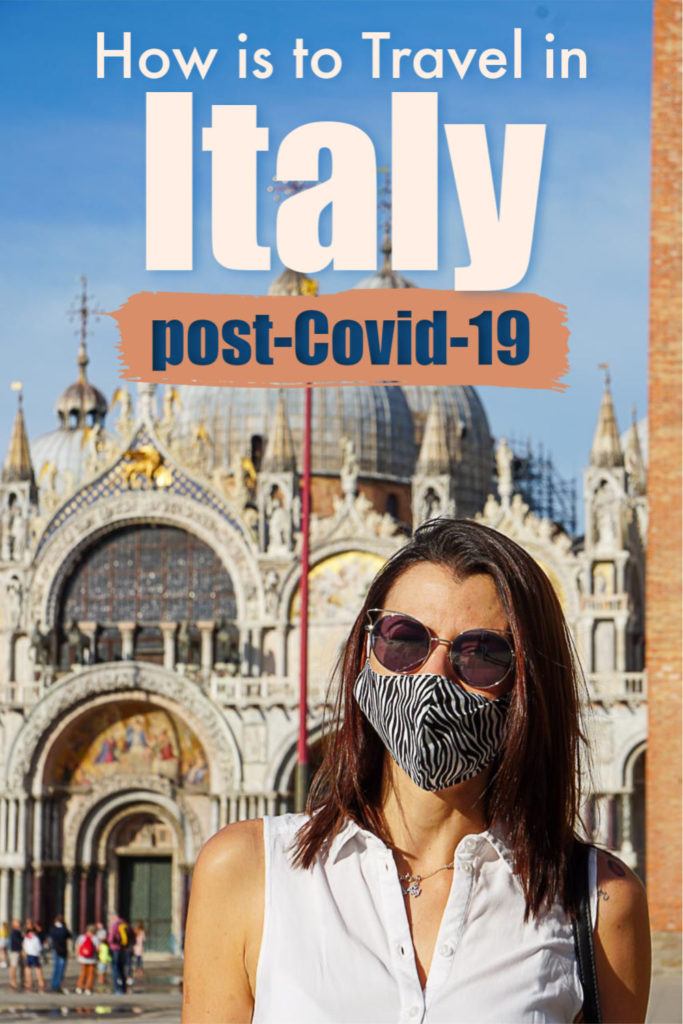

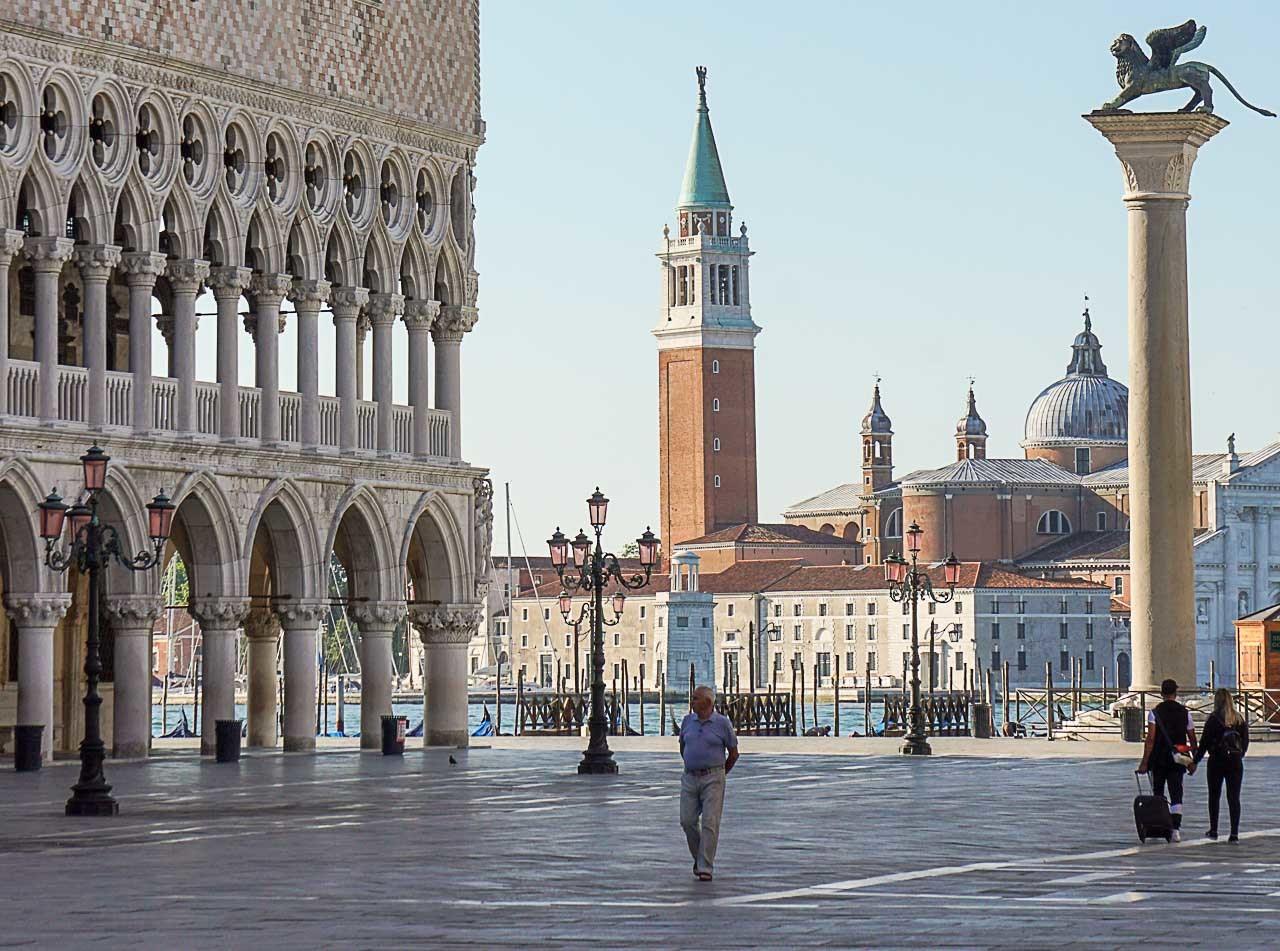
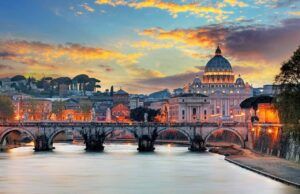
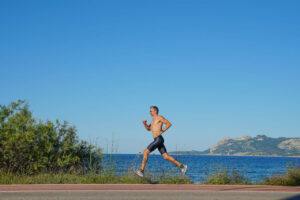
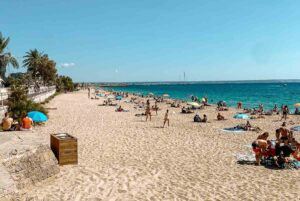
It is the 1st July can I travel to Italy from Hong Kong?
Hi Lisa,
No, Italy decided to keep its borders close to non-EU countries.
Let’s see how the situation evolves in the coming weeks.